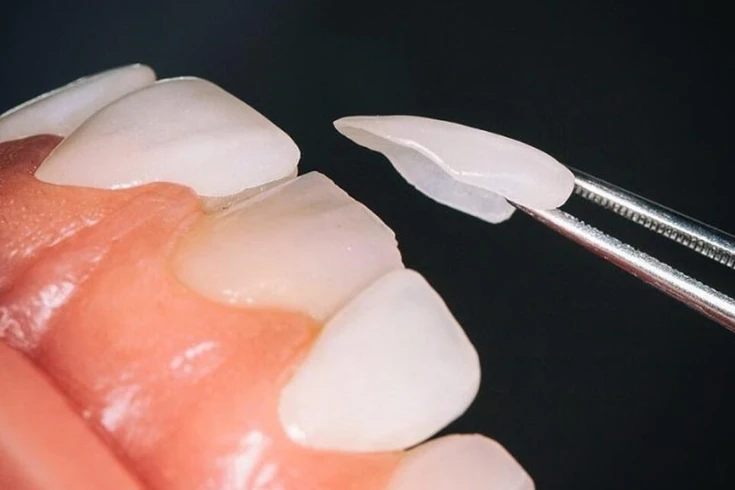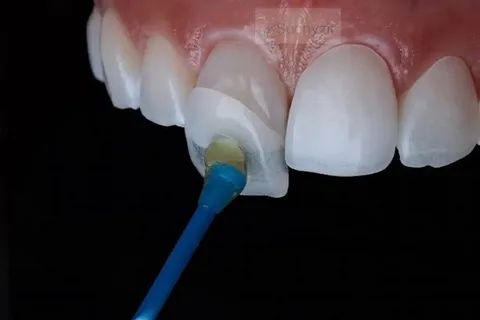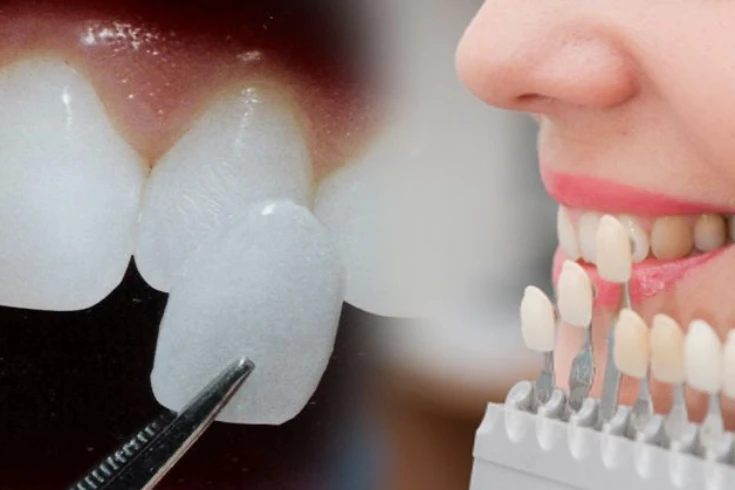How Much Do Veneers Cost?
Veneers are one of the most popular solutions in cosmetic dentistry, designed to improve the appearance of your smile by addressing issues such as discoloration, chipped or worn teeth, and gaps. While the benefits are well-known, many people hesitate to pursue veneers because they are unsure about the costs involved. Questions like how much veneers cost, how much veneers cost with insurance, and how much veneers cost without insurance are common among prospective patients. In this blog, we’ll delve deep into the costs of veneers, covering factors that influence pricing, insurance implications, materials, and why they might be worth the investment.
What are Veneers?
Veneers are thin shells, usually of porcelain or composite resin, that can be custom-designed to fit exactly over the front surface of your teeth. They enhance the appearance of your smile and can fix various dental imperfections, including:
- Stained or discolored teeth
- Misaligned or uneven teeth
- Gaps between teeth
- Chipped or broken teeth
Read More: What are the Veneer
What are the different Types of Dental Veneers:
Porcelain Veneers
- Features: Strong, natural-looking, resistant to staining.
- Longevity: These veneers can last up to 10-15 years when well taken care of
- Cost: Generally higher but offers better aesthetics and durability
Composite Veneers
- Features: Made from resin material, cheaper, not as durable as porcelain.
- Longevity: 5–7 years with good care.
- Cost: Less expensive upfront, suitable for temporary needs.
How Much Do Veneers Cost?
The question of how much veneers cost is not straightforward because the price depends on numerous factors, including the type of veneer, the dentist’s expertise, and the location.
Average Costs in the U.S.:
- Porcelain Veneers: $900–$2,500 per tooth.
- Composite Veneers: $250–$1,500 per tooth.
These prices are per tooth, so a full smile transformation can start as high as 8-10 veneers, running upwards of $8,000 to $25,000 and beyond.
How Much Do Veneers Cost with Insurance?
Insurance coverage can greatly affect how affordable the veneers will be. In determining how much veneers cost with insurance, consider the limitations in coverage:
Why Most Insurance Plans Don’t Cover Veneers:
Veneers are a cosmetic procedure for the most part,. Because they are considered elective and not medically necessary, conventional dental insurance covers veneers rarely.
Exclusions:
A few insurance companies might partially cover veneers if they are required to:
- Restore broken teeth as a result of an injury.
- Restore function if the teeth are grossly damaged or decayed.
Estimated Cost Out-of-Pocket with Insurance:
- Porcelain Veneers: $500–$1,200 per tooth, depending on partial insurance coverage.
- Composite Veneers: $125–$750 per tooth.
How Much Do Veneers Cost Without Insurance?
The costs of veneers can be quite an investment for individuals without insurance. The cost of veneers without insurance, can only be truly understood by taking into consideration the type of veneer and the number of teeth involved.
Average Price of veneers without Insurance:
- Porcelain Veneers: $900–$2,500 per tooth.
- Composite Veneers: $250–$1,500 per tooth.
To help make veneers more affordable for those without insurance, many clinics provide financing options and flexible payment plans. Others use dental tourism to lower costs.
How Much Do Porcelain Veneers Cost?
When it comes to cosmetic dentistry, porcelain veneers represent the gold standard based on their superior durability and natural appearance. But how much do porcelain veneers cost, and why are they worth it?
Costs of Porcelain Veneer:
- Per Tooth: $1,000–$2,500.
- Full Smile Makeover: $8,000–$25,000 (8–10 teeth).
Why Porcelain Veneers Cost More:
- Durability: They last 10–15 years or more with proper care.
- Aesthetic Appeal: Mimics natural tooth enamel.
- Stain Resistance: Unlike natural teeth, porcelain veneers are highly resistant to staining.
Although they are more expensive than composite veneers, their longevity and appearance often make them a more cost-effective option in the long run.
Factors Influencing Veneer Costs
When calculating the cost of veneers, the following must be put into consideration:
- Material: One of the factors that influence the veneer cost is material. Material like porcelain is high in cost when compared to composite, so it will impact the cost entirely.
- Dentist Expertise: Cosmetic dentists with high skill charge higher, but expertise can make a big difference in aesthetics and looking natural.
- Geographic Location: Prices change due to your geographic location. Places with a high cost of living tend to have higher prices for dental treatments.
- Number of Veneers Needed: The number of teeth you need or want to improve will affect your total price.
- Additional Treatments: Any preparatory treatments needed, such as cleaning, reshaping gums, or dental treatments prior to veneers, may add to an overall higher cost.
Are Veneers Worth It?
If you are investing in veneers, whether porcelain or composite veneers, they offer several benefits that often outweigh the costs:
Advantages of Veneers:
- Improved Aesthetics: Immediately enhance the appearance of one’s teeth by masking chipping, discoloration, and gaps.
- Natural-Looking Results: It is designed to look like natural teeth and no more, thus providing a realistic finish.
- Stain Resistance: Porcelain veneers are highly resistant to discoloration from coffee, tea, and other staining agents.
- Durability: Long-lasting solution for dental flaws, often lasting 10-15 years with proper care.
- Minimally invasive: It needs much less shaving than natural tooth enamel compared to crowns or some other restorative options.
Disadvantages of Veneers:
Though there are advantages of getting veneers, there are also some disadvantages of it. Some of the disadvantages of getting the veneers are as follows:
- Irreversible Procedure: Enamel removal is required, making the process permanent and non-reversible.
- Cost: Veneers are considered moderately costly compared to other cosmetic dental procedures.
- Fracture: While durable, veneers may chip, fracture, or break off with excessive force.
- Sensitivity: There is a possibility of increased sensitivity following the removal of enamel to hot and cold.
- Color Mismatch: Veneers can’t easily be adjusted for color after having been applied; surrounding teeth may change color over time, but veneers will not.
Veneers vs. Alternatives
If you’re exploring alternatives due to concerns about how much veneers cost, consider these options:
| Procedure | Cost Per Tooth | Durability | Pros | Cons |
| Teeth Whitening | $200–$1,000 | 6 months–1 year | Cost-effective, quick | Temporary, not for chips |
| Dental Bonding | $300–$800 | 5–7 years | Affordable, versatile | Less durable, stains easily |
| Invisalign Braces | $3,000–$8,000 | 12–18 months | Corrects alignment | Time-intensive |
Tips for Managing Veneer Costs
After you know how much do veneers cost you need to manage the cost. Below are some of the tips to manage the cost of veneers.
- Compare Several Clinics: Research a number of dental clinics and seek quotations to get value for money regarding the services.
- Choose the Right Material: Composite veneers are cheaper than porcelain ones; thus, if on a tight budget, prefer these.
- Accredited Dental Schools: Consider getting your veneers done at an accredited dental school where services are often provided at a lower cost.
- Check for Insurance Coverage: While most insurance plans don’t cover veneers, some may partially cover related treatments; consult your provider.
- Ask About Financing Options: Many dental clinics can offer options for either payment plans or financing to extend the cost for an extended period.
- Discount and Package Deals: Check for clinics offering discounts for more than one veneer or deal packages.
Conclusion:
This blog has looked into some common queries on veneer costs and answered questions like how much veneers cost, how much veneers cost with insurance, how much veneers cost without insurance, and how much porcelain veneers cost. While veneers are a pretty big investment, if they affect your confidence and the aesthetic of your smile, they may well be worth every penny. If you’re considering veneers, consult with a cosmetic dentist to discuss your goals, budget, and payment options. With the right information and planning, your dream smile is within reach!
FAQs
How much do porcelain veneers cost for a full smile makeover?
For a full smile makeover (8–10 veneers), porcelain veneers can cost between $8,000 and $25,000.
Why are porcelain veneers more expensive than composite veneers?
Porcelain veneers are more expensive because they are more durable, natural-looking, and resistant to staining. They can last 10–15 years, making them a long-term investment compared to composite veneers, which last 5–7 years.
Do dental insurance plans cover veneers?
In most cases, no. Veneers are considered cosmetic and not medically necessary, so standard dental insurance plans typically don’t cover them. Exceptions may apply if veneers are needed for functional restoration.
Are there financing options available for veneers?
Yes, many dental practices offer payment plans or financing options to help make veneers more affordable. Third-party financing companies like CareCredit may also be an option.
Is the process of getting veneers painful?
Most people do not get the treatment in fear that the procedure is painful. So, is the process of getting veneers really painful. The procedure is typically not painful, as local anesthesia is used during enamel removal and placement. Some patients may experience mild sensitivity afterward, which usually subsides within a few days.
Can veneers be whitened?
No, veneers cannot be whitened. If discoloration occurs over time, replacement may be necessary. To maintain their brightness, avoid foods and drinks that stain.





